You may have never heard of Antiochus I Soter . After all, he has gone down in history somewhat in the shadow of his father, Seleucus, one of Alexander the Great's generals, commander of the hypaspists and the Companions, protagonist of the Diadochi wars and founder of the Seleucid Empire. Antiochus was his successor, participating in the last contest as an epigone (the epigones were the successors of the diadochi) and consolidating the conquests of his progenitor, which allowed him to assume an ancient Mesopotamian title:King of the Universe.
Antiochus was born around 323 or 324 BC. The exact place is not known, although it must have been somewhere in that vast area that Seleucus had managed to subdue and that extended from the interior of Asia Minor (north of Cilicia) to the borders with Corasmia to the north, the Mauria Empire to the west and the Indo-Pakistani part of the Indian Ocean to the south, passing through the Syrian-Palestinian strip, the aforementioned Mesopotamia, Persia, Turkmenistan, Pamir and, in short, the territories that were once under the control of the Empire Achaemenid.
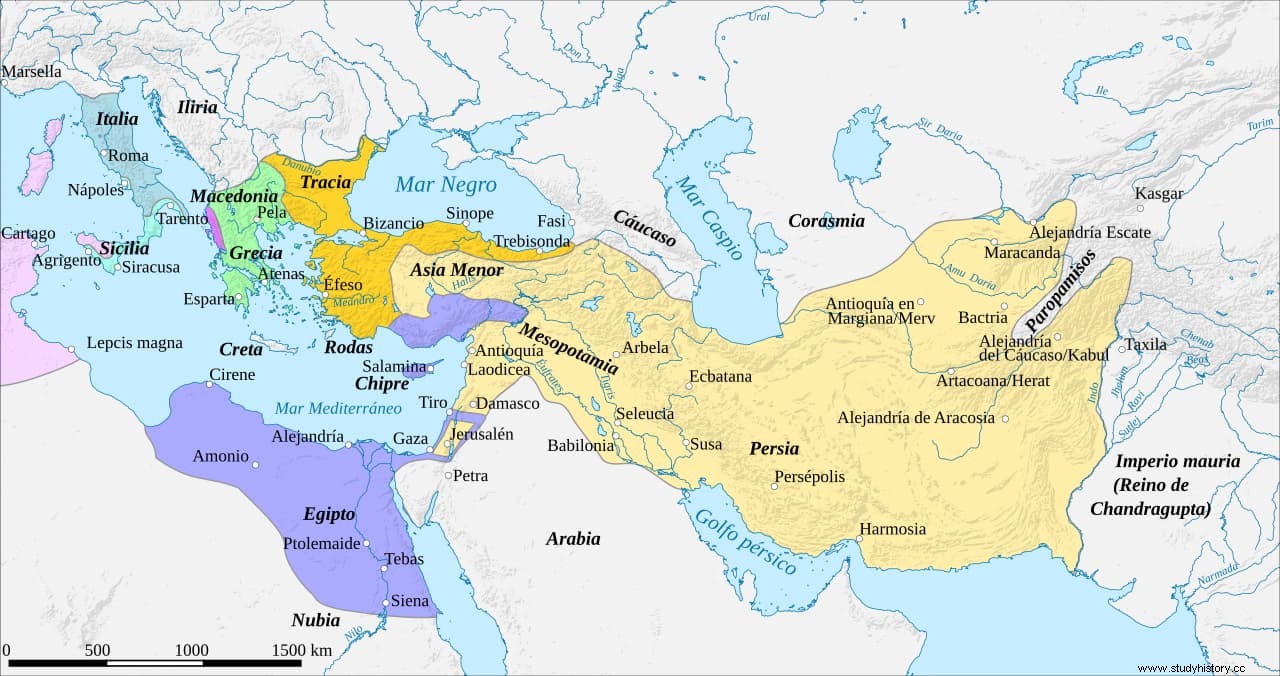
As heir to those domains, Antiochus was the second of the Seleucid dynasty, which spread the Hellenistic culture through them, supported by a strong immigration from Greece. In fact, his father made him co-regent in 292 BC. and even he yielded to his own wife, Stratonice. It should be clarified that she was not the mother of Antiochus, since this was the princess Apama I, daughter of the Persian nobleman Spitamenes, a Sogdian warlord who had faced Alexander the Great; Let us remember that the Macedonian encouraged his officers to marry women of the Persian nobility. It is not clear whether Seleucus took Stratonice - between 300 and 327 - as his second wife (in Persia royal polygamy was a tradition to guarantee her offspring) or married her when the other died.
The thing is that Stratonice became the involuntary protagonist of that strange double marriage bond, first with her father and then with her son. Plutarch and Appian explained it by assuring that Antiochus was so madly in love with her that he was on the verge of her death and that is why Seleucus gave it to him in 294 BC. after divorcing her and together with the government of the eastern provinces. However, the context must be taken into account:Stratonice was the daughter of Demetrius Poliorcetes, heir to Antigonus I (another diadochi who had appointed himself king of Macedonia, inaugurating the Antigonid dynasty) and, therefore, we would speak of a strategic wedding.
However, although Stratonice was forty-one years younger than Seleucus when she married him, the two hit it off and she bore him a daughter, Fila. The same thing happened later with Antiochus, of whom the chronicles say that they were a happy couple, although they do not go into many details and only record that they had five children:Seleucus (who would be executed for rebellion), Laodice, Antiochus II Theos (successor after the death of the firstborn), Apama (whom he married to the king of Cyrene) and Stratonice (whose husband would be his cousin Demetrius II of Macedon).
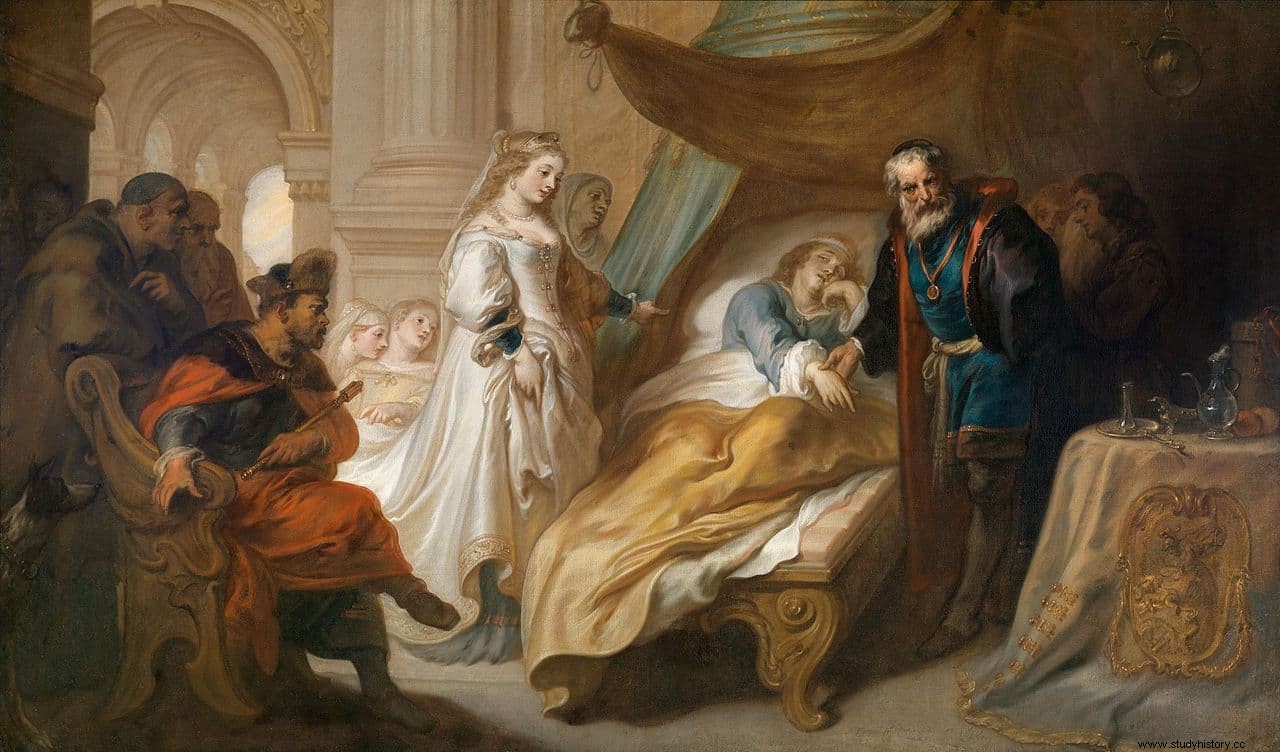
Shortly after defeating Lysimachus, another diadochus-turned-king of Thrace, at the Battle of Corupedius, Seleucus was assassinated in 281 BC. by Ptolemy Cerauno in the midst of a maelstrom of intrigue and hatred between former comrades-in-arms. Probably incited by Ptolemy II of Egypt, some regions of the empire took the opportunity to revolt -Syria, especially-, since, as we saw, Antiochus was far away, ruling in the East. But, in general, the fact of having been associated with the throne by his father guaranteed him majority loyalty, so the campaign he had to undertake was not so much one of repression as of pacification to settle the recent victories of his father, who saved Egypt they left most of the Achaemenid Empire in their hands.
However, the extraordinary territorial gains that the second of the Seleucids inherited were not an obstacle so that, at the same time, he had to give up some areas. Thus, he was forced to return to Athens the islands that Demetrius Poliorcetes had seized from the clerucos (military men converted into settlers), he was unable to subdue Bithynia and he was also unable to reduce Cappadocia, also renouncing Macedonia and Thrace definitively. To make matters worse, in 278 B.C. he had to face an invasion of Asia Minor by the Galatians.
The Galatians were a people formed by a confederation of various Celtic tribes who, coming from Gaul, had settled in Anatolia between the 8th and 5th centuries BC, forming what became known as Galatia:it bordered Bithynia and Paphlagonia to the north, to the east with Pontus and Cappadocia, to the south with Cilicia and Lycaonia and to the west with Phrygia, being its capital in Ancyra (which the Seleucids called Angora and is currently Ankara). Under Brennus' leadership, they had passed first through Macedonia and Thessaly, then through Epirus and Olympia, plundering everything in their path. The Greeks could not stop them and fell defeated at Thermopylae but the Macedonian guerrillas and the death of Brennus in combat made them cross the Hellespont.
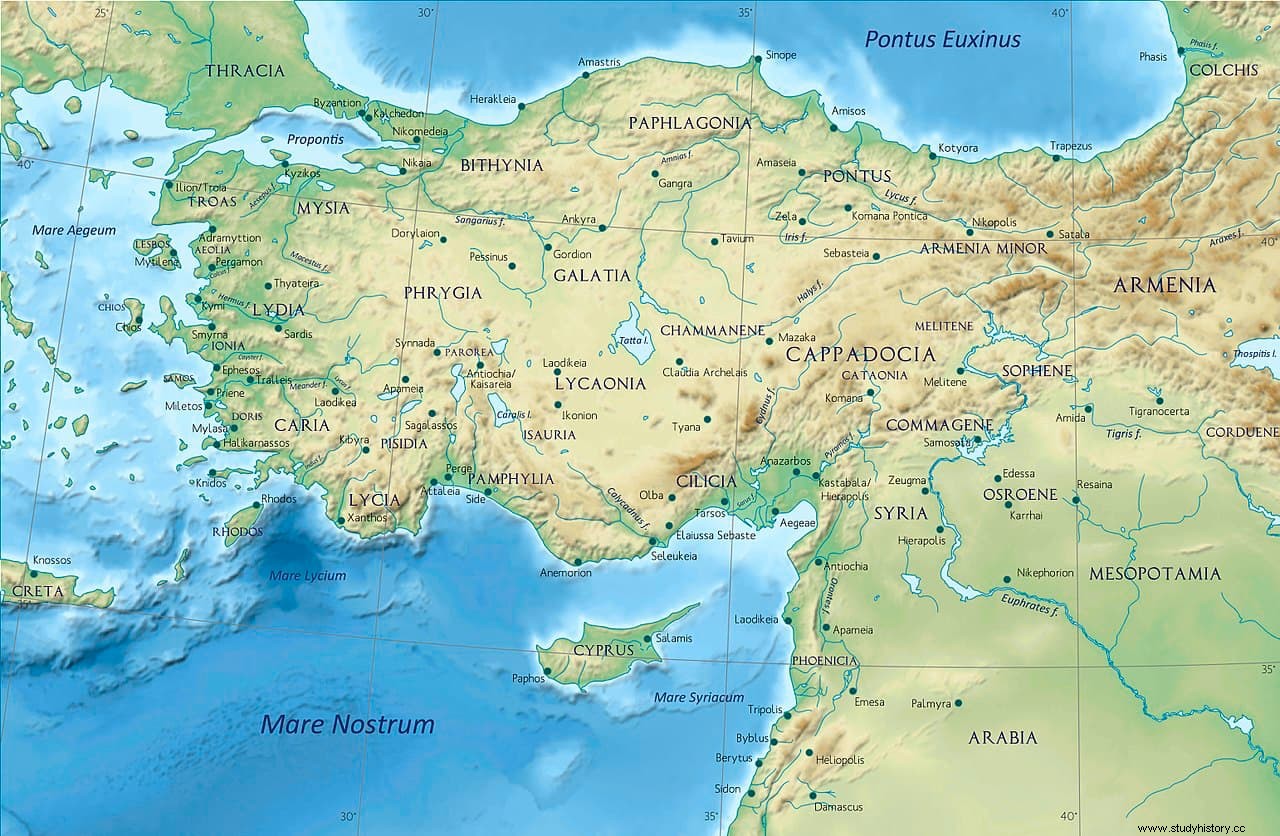
Although they had internal divisions, they constituted an obvious danger because they received help from Nicomedes I of Bithynia to confront his brother Cipetes II, who disputed the throne. Led by new chiefs like Leonnoro and Lutario, they seized Thrace, Byzantium, and Lysimachia, making numerous cities tributaries. Cipetes was effectively defeated and the next objective was Ptolemy II, commissioned by Mithridates I of Pontus, who was at war with him for the possession of various cities in Anatolia and took advantage of the fact that the Egyptian would have to attend to two fronts, since He was immersed in the aforementioned conflict in Syria with Antiochus I. Thus, one piece after another, it was his turn and he prepared to stop his advance.
The sources of the time hardly give details of that war except that the Seleucid king, determined to stop the advance of the Galatians, marched against them in the year 275 BC, and faced them in a battle in which he used war elephants from from India. That combat, which is known by the name of these animals, ended with the triumph of Antiochus, who thus earned the nickname with which he went down in history:Sóter, which in Greek means savior. It was put on by the Ionian cities, which were the main beneficiaries of the conflict as they were freed from the extortion of the Galatians. These would be finally crushed by Attalus I of Pergamum (whom they also called Soter), a descendant of Seleucus on his mother's side who commemorated that success by building the monument of which only the copy of the famous statue of the Dying Galatian .
Secluded in Galatia, the Galatians would henceforth be employed as mercenaries and, ironically, the Seleucids themselves would hire them for their armies. Because once that threat was over, it was time to attend again to the Syrian war against Ptolemaic Egypt. Neither of the two parties prevailed in an expeditious manner and both maintained their respective territories, leaving only some border cities such as Damascus and others in permanent contention, constantly changing hands (although, in the long run, the Seleucids would agree to an alliance with Ariobarzanes of Pontus , the successor of Mithridates, to seize the coast of Syria and southern Asia Minor from the Ptolemies).
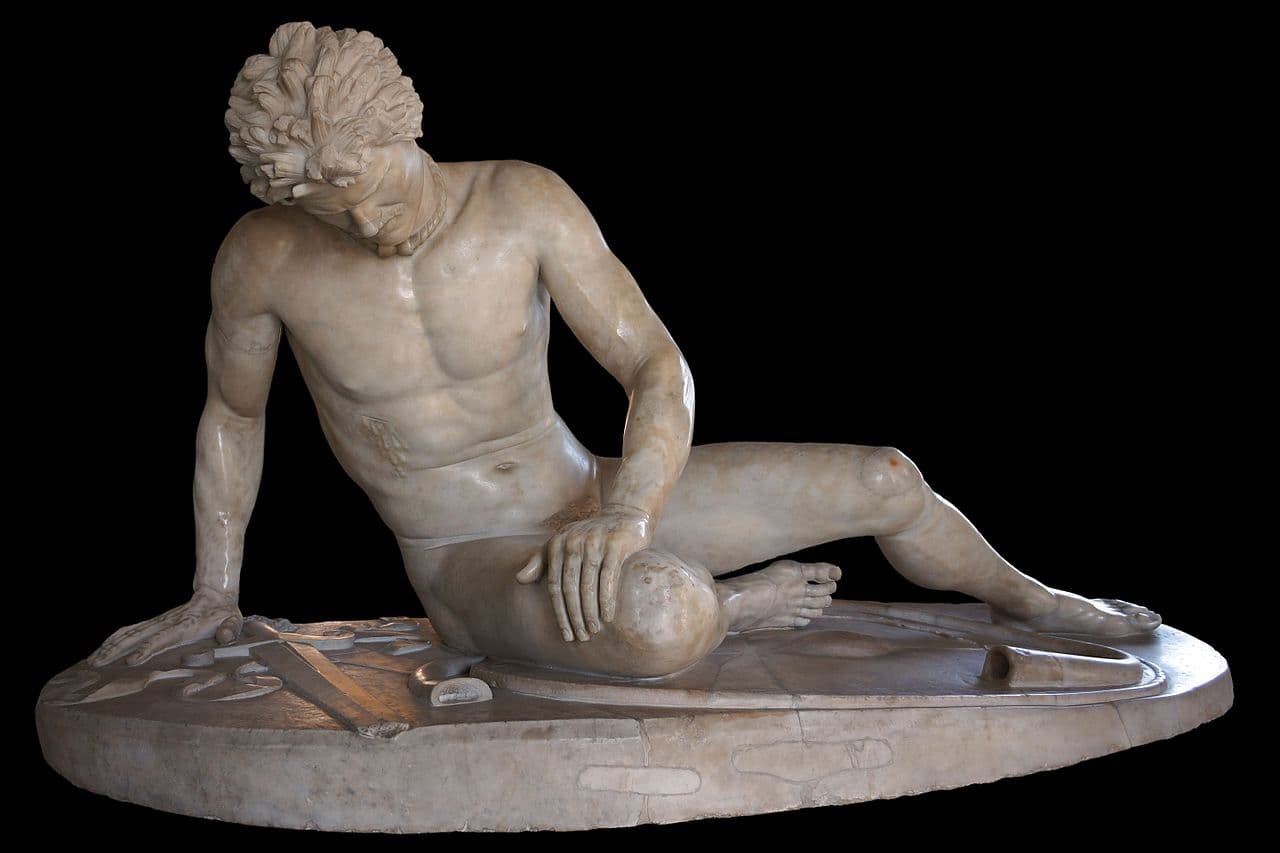
There were also internal problems. In 275 BC, the same year as his victory against the Galatians, Antiochus made his eldest son Seleucus co-regent, to whom he handed over the government of the eastern provinces, just as his father had done to him. However, Seleucus was not satisfied and after twelve years of apparent tranquility he organized a rebellion that, as we outlined before, ended when he was defeated and sentenced to death, passing the inheritance rights to his brother Antiochus II Theos . He took the witness on the throne in 261 BC, when his father died during a campaign against Pergamon in which he was defeated in Sardis.
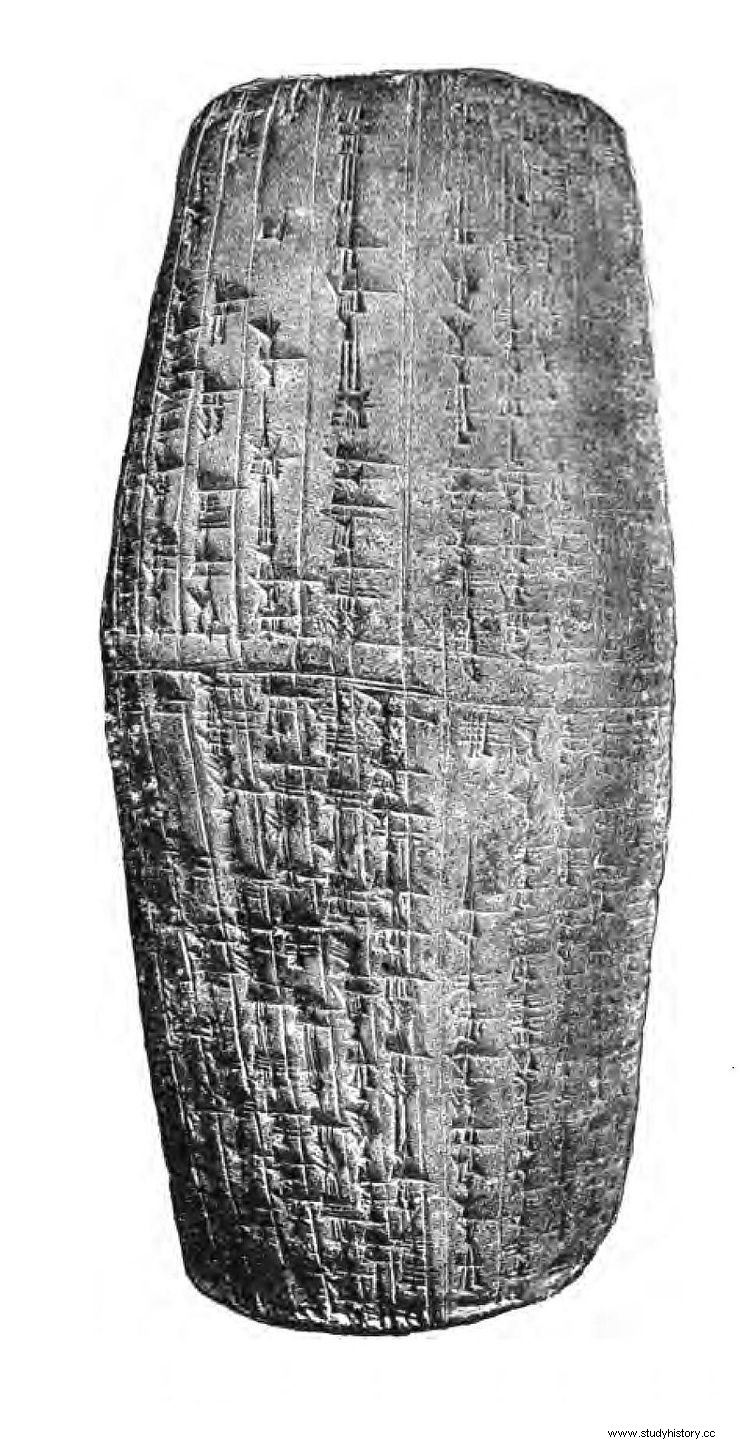
Now, it remains to be told how he became King of the Universe. That title had been born in Kish, an ancient city of Sumer; in fact, the original name of the denomination in Sumerian, ki-sár-ra , means king of Kish, expanding that meaning in Akkadian (šarru kiššat māti ). Obviously, it was a way to manifest the power of a sovereign over all the other Mesopotamian cities (Ur, Uruk, Lagash and Umma) to form the first proto-empires, transcending the title of lugal (plain king) and apart from the fact that, according to mythology, the monarchy was born precisely in Kish, descending from heaven there after the flood.
Sargon of Akkad was the first to go a step beyond mere royalty by being named šarru kiššat māti or šar kiššatim (King of the Universe) but his son Naramsin left him behind calling himself šar kibrāt erbetti , that is, King of the Four Corners of the World . The differences are not clear and it is pointed out that the first title would be cosmological and the second terrestrial (perhaps linked to military successes). A good part of the Assyrian and Babylonian kings willingly inherited these dignities, which served to vindicate them as heirs of Sargon; then, after conquering Babylon, so did the Achaemenids, (although they preferred Xšâyathiya Xšâyathiyânâm , that is, King of Kings ).
Therefore, when they were overthrown by Alexander and replaced by the Seleucids, Antiochus I was the one who regained the title of šar kiššatim (King of the Universe). This is reflected in the cylinder that bears his name, a piece that narrates the reconstruction of the Temple of Ezida in the city of Borsippa following the Mesopotamian model of royal inscriptions. However, that king was the only one of the thirty of that dynasty who used it and later the Sassanids did not resort to it either, surviving only in Christianity applied to God but with a more ethereal sense. So it can be said that Antiochus I Soter was the last King of the Universe .
